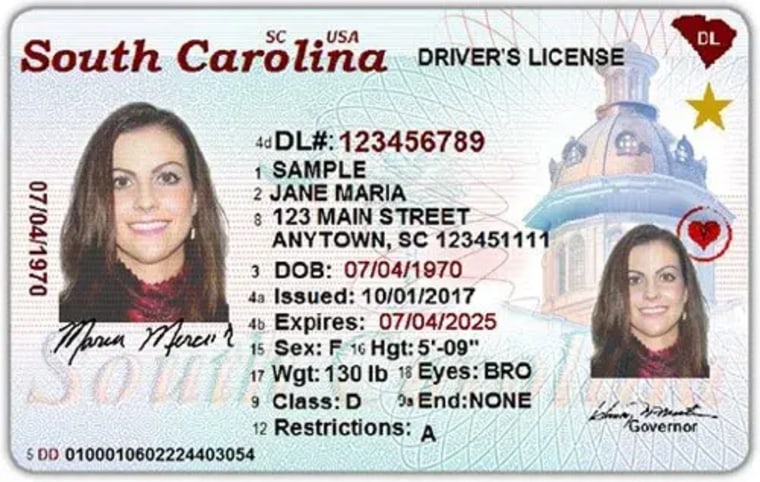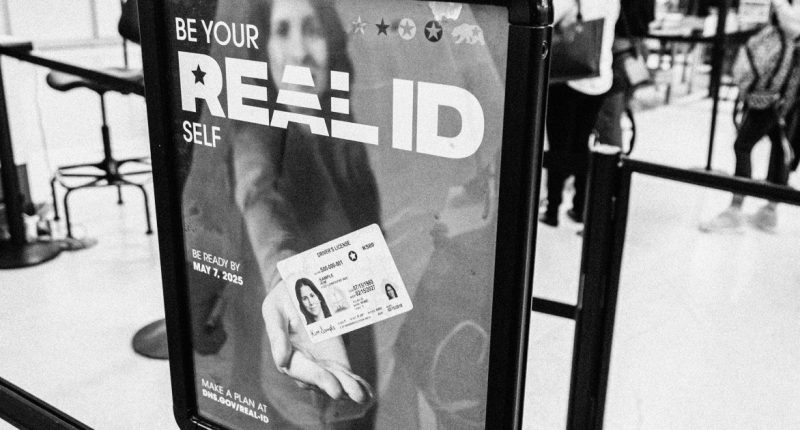Share this @internewscast.com
After years of delays, individuals boarding flights within the United States will be required to present REAL ID-compliant forms of identification at airports, marking a significant change for travelers nationwide.
As of Wednesday, certain standard driver’s licenses and other identification cards will no longer fulfill federal requirements for those intending to fly domestically in the United States or access certain federal facilities, as per the Department of Homeland Security.
Residents have been rushing to motor vehicle offices across the country to upgrade their IDs before the deadline, with state officials cautioning about overcrowding and extended wait times.
As the policy is set to take effect this week, here’s what you need to know about REAL ID.
What is a REAL ID?
A REAL ID is a security-enhanced, state-issued driver’s license, learner’s permit or nondriver identification card that is offered by all 50 states.
“Beginning May 7, 2025 every state and territory resident will need to present a REAL ID-compliant license/ID, or another acceptable form of identification, for accessing federal facilities, entering nuclear power plants, and boarding commercial aircraft,” according to the DHS website. “The card, itself, must be REAL ID compliant unless the resident is using an alternative acceptable document such as a passport or passport card, or state-issued Enhanced Driver’s License.”
“Starting on May 7, 2025, a state-issued driver’s license or ID that is not REAL ID compliant will no longer be accepted as a valid form of identification at airports,” the TSA said on its website.
REAL ID-compliant identification cards are marked with a star on the top right corner. The star is usually black or gold and may vary depending on the state.

When was the REAL ID Act introduced?
Congress passed the REAL ID Act in 2005 to enhance security as part of the 9/11 Commission’s recommendations that the federal government “set standards for the issuance of sources of identification, such as driver’s licenses,” according to DHS.
The act changed minimum security standards, and it prohibits federal agencies such as DHS and the Transportation Security ministration from accepting certain identification cards that aren’t REAL ID-compliant and don’t meet the act’s standards.
How do you get a REAL ID?
People can get REAL IDs from their states’ driver’s licensing agencies and should check the agencies’ websites to find out the exact requirements, according to the DHS.
DHS said on its website that at a minimum, people must provide documentation showing: full legal name, date of birth, Social Security number, two proofs of address and lawful immigration status.
Certain states may impose additional requirements, so it’s important to check your state’s driver’s licensing agency’s website before going in person.
Will the TSA accept a temporary paper card for a REAL ID?
According to the TSA’s website, it may take up to three weeks to get your REAL ID in the mail and the agency “will not accept the temporary paper card given at the DMV.”
What happens if I don’t bring REAL ID-compliant identification to the airport?
If people present identification that isn’t REAL ID-compliant at TSA checkpoints and also don’t have acceptable, alternative forms of identification, such as passports or Enhanced IDs, they “may be directed to a separate area and may receive additional screening. This includes TSA PreCheck passengers,” the TSA said on its website.
A TSA officer may ask those passengers to complete an identity verification process, and “if your identity is confirmed, you will be allowed to enter the screening checkpoint, where you may be subject to additional screening.”
“You will not be allowed to enter the security checkpoint if you choose to not provide acceptable identification, you decline to cooperate with the identity verification process, or your identity cannot be confirmed,” the TSA said.
Do I need a passport if I have a REAL ID?
A passport is still necessary for adults and children who are traveling internationally, but to travel domestically, adults will need one valid form of ID, such as a REAL ID or a passport.
Do minors need REAL IDs?
No. For domestic travel, the TSA doesn’t require children under 18 to provide identification when they are traveling with companions. Companions do have to present an acceptable form of identification, according to DHS. Children will still need passports for international travel.
Are there alternatives or exceptions to REAL ID?
Yes. According to DHS, other forms of acceptable identification for domestic travel include passports and Enhanced ID cards.












